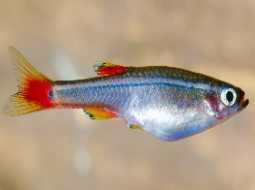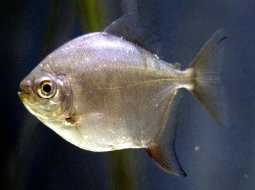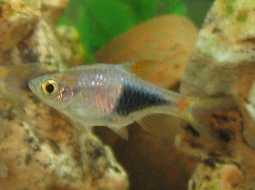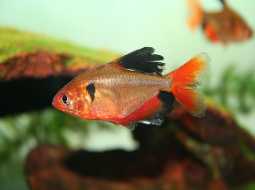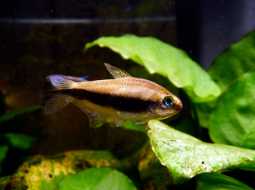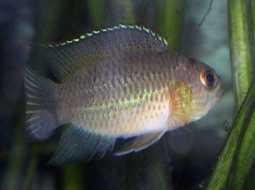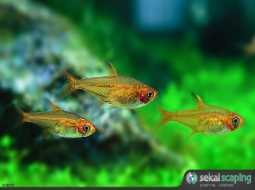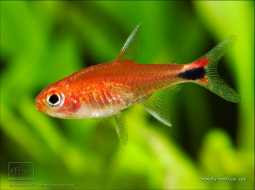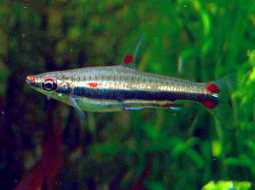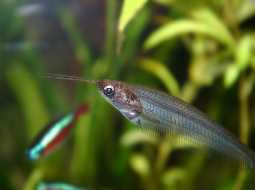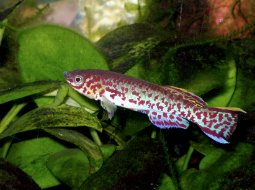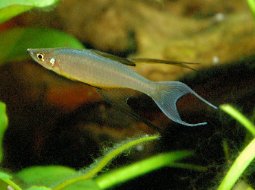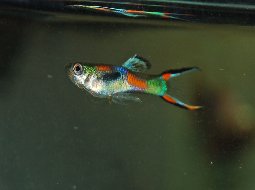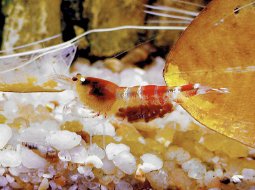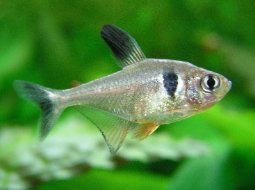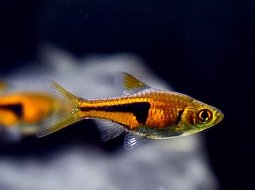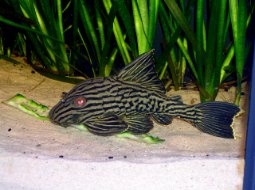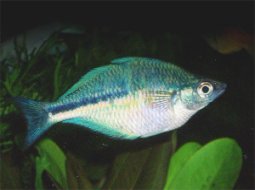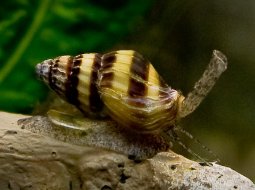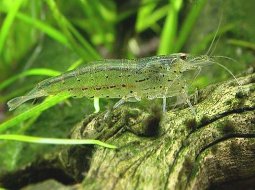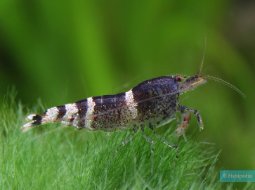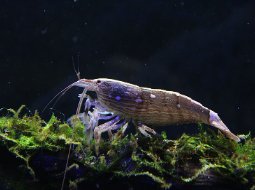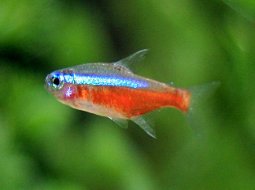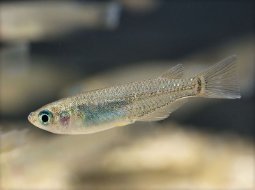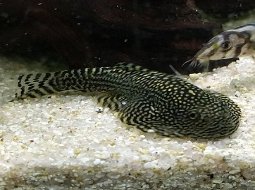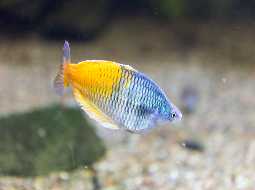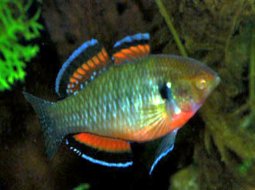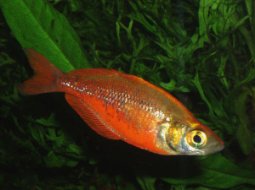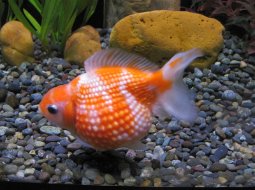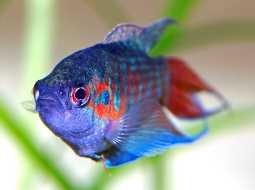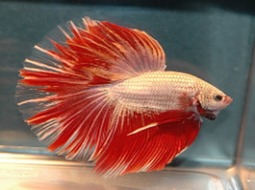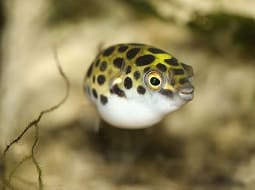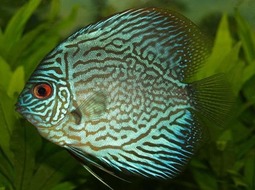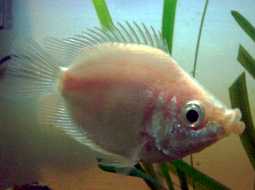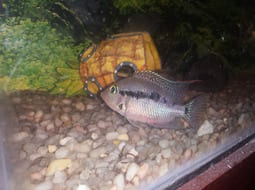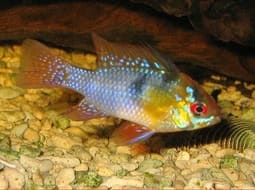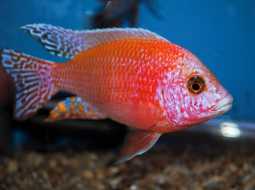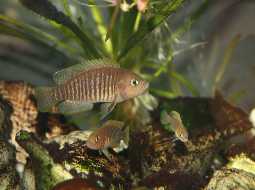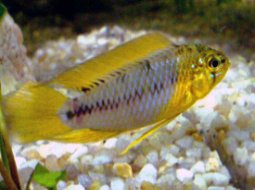
Loading Aqualapp ...
Care and Compatibility of Glassy Perchlet - Parambassis ranga
Introduction
The Indian Glassfish is native to rivers and lakes in Asia, specifically the Ganges River basin. It is characterized by its transparent and slender body, which gives it a 'glass' appearance. Their dorsal fin is bright yellow, providing an attractive contrast. They can reach a length of up to 10 centimeters in adulthood.
Behavior
The Indian Glassfish, scientifically known as Parambassis ranga, is a peaceful and calm species that can be added to community aquariums. They are social fish that typically swim in groups and get along well with other peaceful fish species of similar size. Although they are relatively shy, they can become more confident over time and with the right environment. They are fast and agile swimmers and enjoy exploring all areas of the aquarium.
Sexual Dimorphism
Sexual dimorphism in Parambassis ranga is minimal and difficult to distinguish. Both males and females have a similar appearance. During breeding season, they may display courtship and territorial behaviors.
Reproduction
Breeding Indian Glassfish in the aquarium can be challenging as they require specific conditions for spawning. They prefer slightly acidic and soft water with a temperature between 24 and 28 degrees Celsius. During courtship, the male and female will swim together and perform shimmying movements. The eggs will be deposited on plants or objects in the aquarium. After hatching, the fry are tiny and will require finely crushed food or infusoria to feed properly.
Aquarium Conditions
Parambassis ranga, commonly known as Indian glassfish, requires a spacious aquarium with clean and well-oxygenated water. It prefers warm temperatures and slightly acidic to neutral water. Aquarium décor should be minimal to provide plenty of swimming space. Maintaining water quality is crucial and providing a varied diet.
Feeding
The Indian Glassfish is primarily carnivorous and feeds on small invertebrates such as worms, crustaceans, and insect larvae. In the aquarium, they can be offered a variety of live and frozen foods, such as daphnia, brine shrimp, and mosquito larvae. They will also accept commercial foods in the form of pellets or flakes. It is important to provide them with a balanced and varied diet to maintain their health and vitality.
Complexity
Caring for Parambassis ranga can be moderately challenging. They are peaceful but sensitive fish that require stable water parameters and proper feeding. They are predators and need a protein-rich diet. They require a group of companions to feel secure and comfortable.
In case you need more help, or if you want to know into any topic related to the Parambassis ranga (Glassy Perchlet) and even any other species you can use the forums to ask what you need.
To do an analysis more detailed about coexistence and behavior of Parambassis ranga (Glassy Perchlet) use the Aquarium simulation tool, if you do this you can test different ways to combine the Glassy Perchlet with other fishes giving the dimensions and space on you aquarium, on this way you can known the optimal configuration for keep the fishes that you want.
You can also find out the 114 species compatible with the Parambassis ranga (Glassy Perchlet) can live together.
Note: The parameters of the water such as PH and temperature are also used to calculate the compatibility of the species.
Compatible species (114)
Compatible (85 Species)
Compatible without any restriction
Similar Sizes (9 Species)
They can coexist if they are the same size or very similar sizes, it does not work in all cases, there may be exceptions.
With Reservation (5 Species)
Compatible in some cases, it depends on the nature and personality of the fish.
Showdown over territory (1 Species)
Fish can live together as long as the space is spacious enough to delimit a territory, otherwise there may be aggressions for competing for the territory.
Considerable size difference (5 Species)
They can coexist while they are similar in size or the size difference is not very abysmal, since as the fish grows it increases the chances of eating its partner that did not grow much.
Compatible if space is enough (9 Species)
They can coexist together if the aquarium they share is large and spacious enough for both species to feel good, as some fish may attack others to feel that they have little space and try to eliminate the competition.
Glassy Perchlet
Parambassis ranga

- Ph: 6.5 - 7.8
- Temperature (c°): 21 - 28
- Measures: 7 cm - 8cm
- Aquarium Capacity:
12 Liters - 3 Gallons - Alimentación: Carnivores, Omnivores
- Colores: Green, Gris, White
- Comportamiento: Active, Likes to take refuge, Peaceful, Shoal
- Habitad: Asian
- Preferencias del Acuario: Logs, Natural plants, Rocks
- Tamaño: Small
- Taxonomía: Fish
- Tipo de Agua: Sweet water, Tropical waters
- Velocidad de nado o movimiento: Normal
- Zona de Nado: Swim in the middle of the aquarium

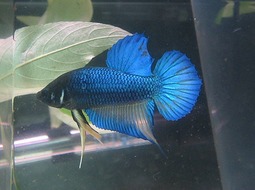
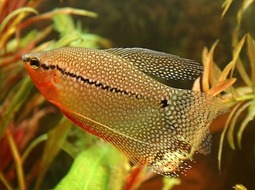

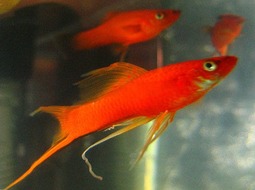
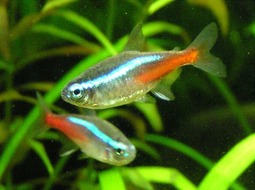


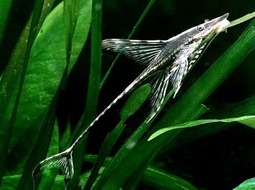


.jpg)

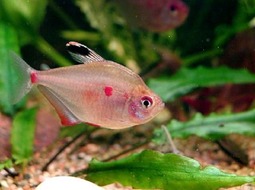





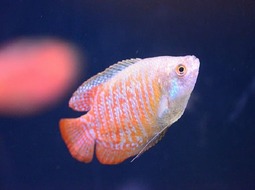

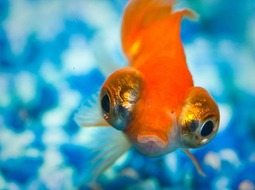
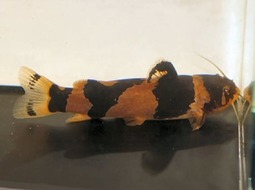
.jpg)



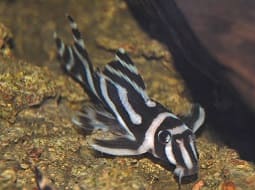
.jpg)

